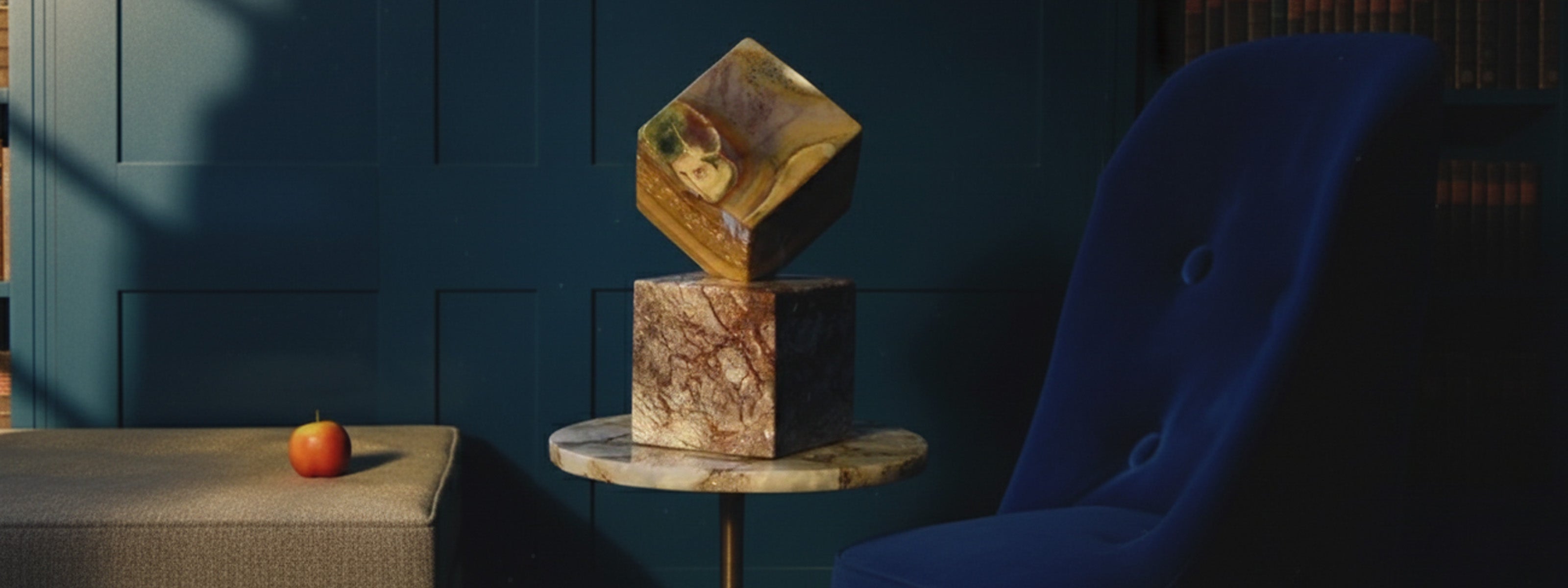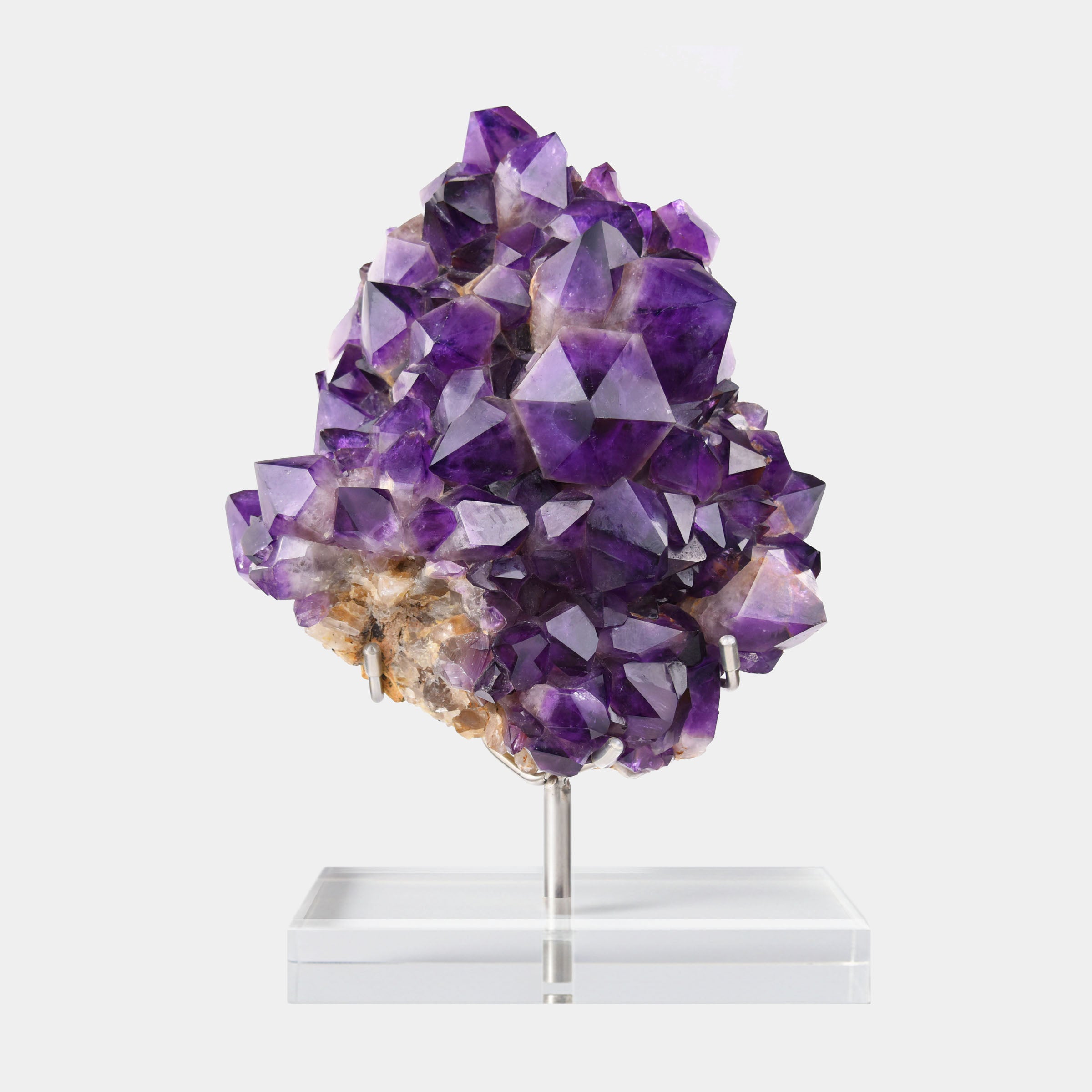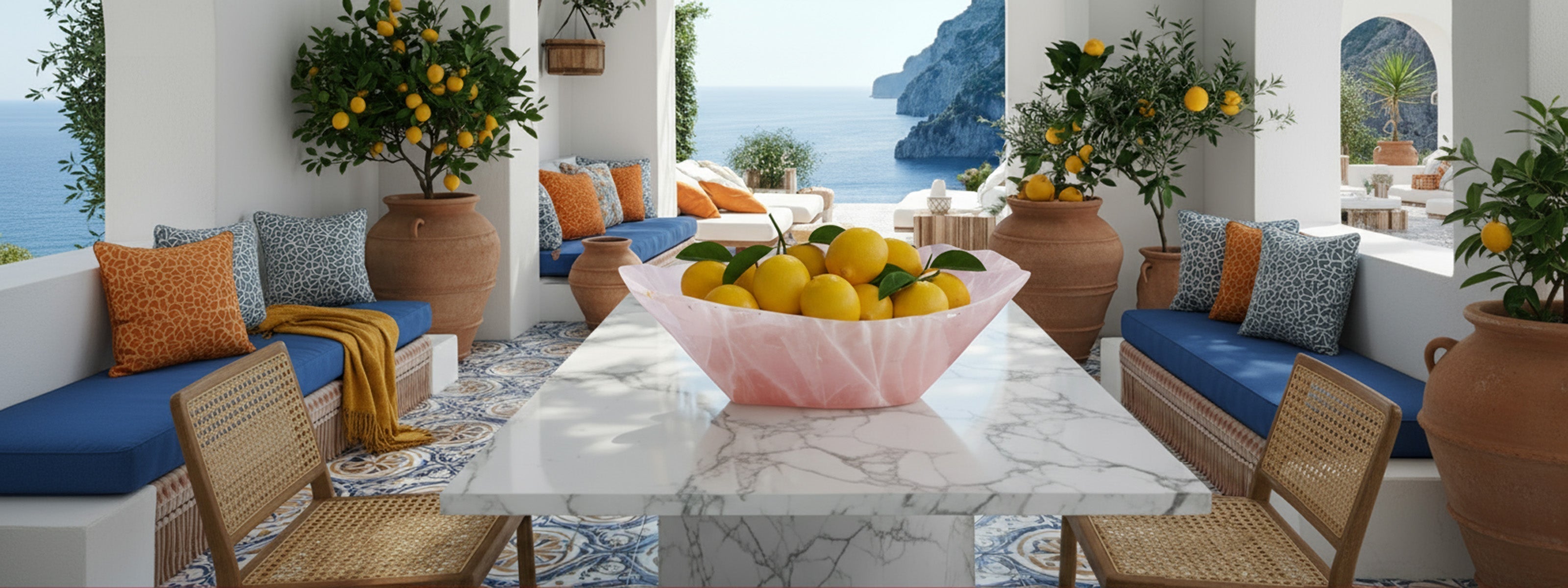Article: The Architecture of Light: How Sculptural Geometric Forms Define an Interior

The Architecture of Light: How Sculptural Geometric Forms Define an Interior
In the world of interior design, a beautiful space is often defined not just by what is included, but by the intentionality of every object. While texture and color provide softness and atmosphere, it is the deliberate use of sculptural geometric forms that provides the critical structure, visual weight, and commanding presence of true luxury.
At Adaptation, we believe each one of our pieces are more than decoration, they're architecture. Here is our guide to leveraging the power of geometric forms to enhance and accentuate your space.
When to Use Sculptural Geometric Forms
Sculptural, faceted, and geometric pieces are the quiet anchors of a room. They should be used strategically to introduce an element of calculated contrast and structure:
1. To Counterbalance Organic and Soft Spaces
Is your room rich with curved furniture, plush velvets, and flowing textiles? These soft elements create comfort, but can sometimes lack definition. Introducing a piece with sharp, clean geometry - like a faceted crystal pyramid, an angular mineral specimen, or a vessel with crisp lines - immediately provides a visual foil.
-
Our Suggestion: Place a rigid, crystalline form next to a soft, round sofa or on a porous, textured surface (like the Travertine counter for example). The contrast between the rigid structure and the fluid texture elevates both elements.
2. To Define a Focal Point
In minimalist or open plan designs, a geometric piece draws the eye and holds attention, instantly grounding the viewer in the space. Consider pieces like our Ocean Jasper Cubes, where the stone’s clean, rigid, right angles frame the complex, mesmerizing world of its natural, colorful patterns (You can view the cube set pictured above here: Golden Ocean Jasper Cube). This predictable repetition of forms offers a sense of stability and intellectual rigor.
-
Our Suggestion: Use a single, magnificent piece, like a large, multifaceted Rose Quartz bowl on a credenza or entry table. Its defined form ensures it is the first thing guests notice, directing their attention exactly where you want it.
3. To Introduce Movement and Direction
Geometric forms are inherently directional. An angled cut pushes the eye toward a certain point; a layered structure creates depth; and facets capture and refract light in a dynamic way.
-
Our Suggestion: Use pieces whose structure guides the eye toward another key element, such as a large artwork or a window view. The sculpture acts as an arrow, subtly linking different elements of the design.
How Geometry Accentuates Your Design Choices
The true artistry of a geometric sculpture lies in how it makes every other design choice in the room look more deliberate.
1. Magnifying Material Contrast
Geometric forms, especially when carved from natural stone or crystal, draw attention to the materials around them.
-
Polished vs. Rough: A smooth, highly polished piece of crystal (like the soft geometry of our Rose Quartz bowls) sitting on a coarse, porous surface like Travertine emphasizes the texture of both. The bowl feels more ethereal; the stone more earthy.
-
Simple vs. Patterned: Placing an elegant, single tone geometric sculpture in front of a heavily veined background (like a dramatic slab of marble) highlights the marble's natural, unpredictable artistry. The clean lines of the sculpture bring a moment of calm to the wild pattern of the wall.
2. Enhancing Color Palettes
The form of the object is an extension of its color. A piece of pink crystal with a faceted, prismatic surface does not merely display its color; it projects it, scattering the hue across the surrounding surfaces.
-
Our Suggestion: Use colored crystal geometry to echo or oppose your dominant palette. A blush toned crystal can subtly warm up an otherwise cool, grey, or white room, adding a layer of sophisticated, unexpected color that shifts with the light.
3. Celebrating Light and Refraction
When the geometric form is rendered in clear or translucent crystal, the object itself becomes a medium for light. Each facet is an opportunity for light to enter, bend, and disperse. This creates an organic, ever changing dance of light and shadow that a traditional object cannot replicate.
The result is a space that doesn't just look luxurious, but one that feels alive, constantly changing and sparkling with intentional energy.
Making the Final Statement
Every choice is a narrative. Sculptural geometric forms are the strongest punctuation marks you can use. They tell a story of precision, intentionality, and appreciation for the foundational beauty of nature created through meticulous craft.
Choose the pieces that resonate with your space, and let their sharp, elegant forms create the structure and light that defines your ultimate interior vision. If you need any help or guidance, we're always here to help!



Leave a comment
This site is protected by hCaptcha and the hCaptcha Privacy Policy and Terms of Service apply.